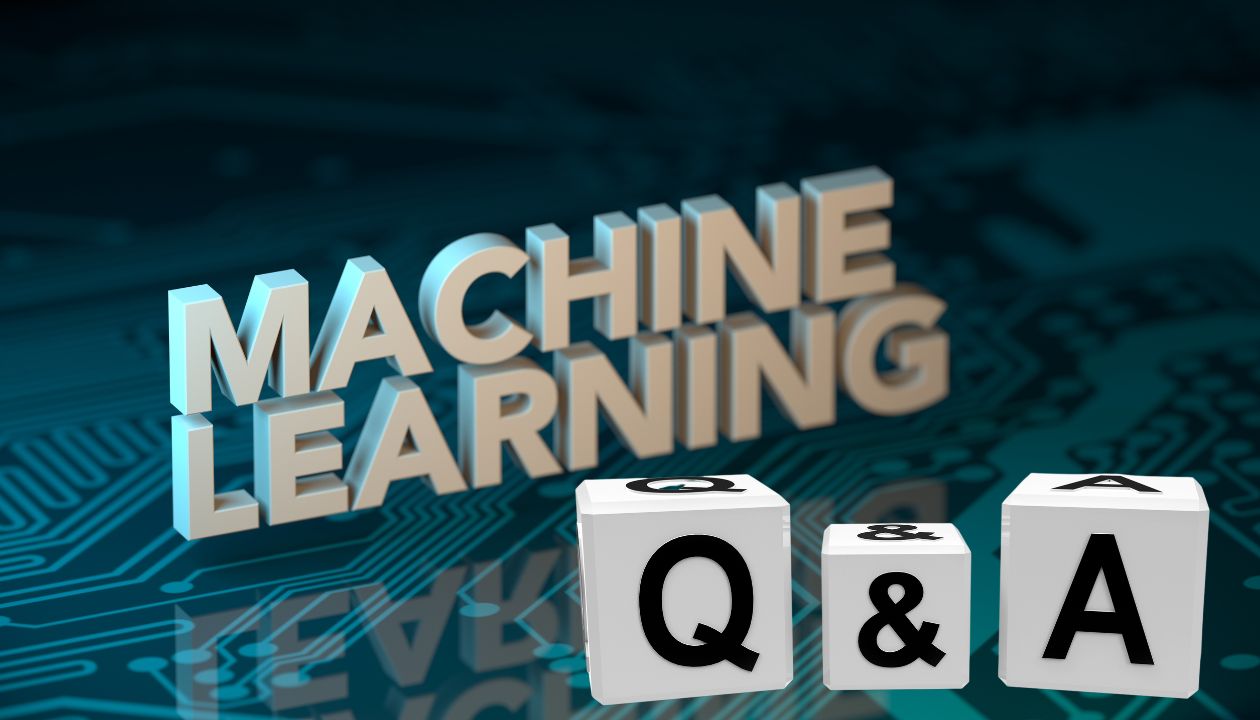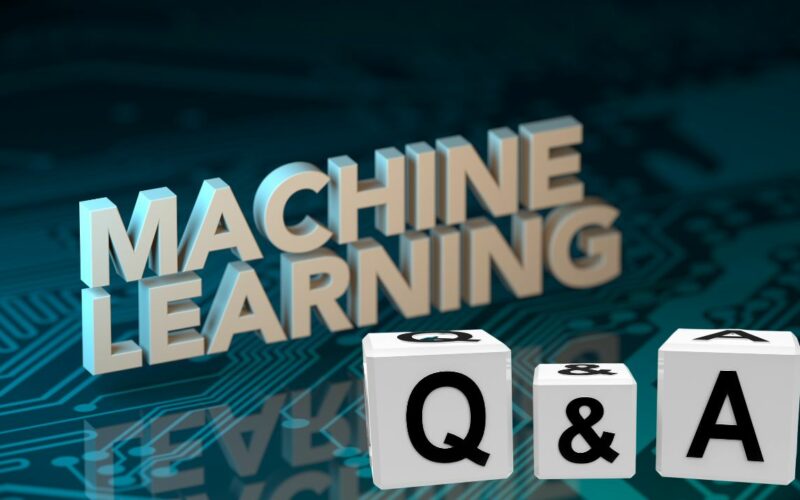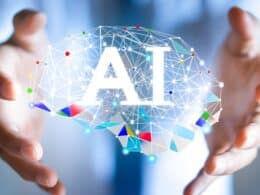Presently, Artificial Intelligence (AI) and Machine Learning (ML) are the two most popular technologies in the world.
Private companies, as well as governmental organizations around the world, are adopting new-age technologies like AI and ML to make services and information more accessible to their people.
One can easily notice the adoption of these technologies in industrial sectors like banking, finance, retail automobile, healthcare, agriculture, manufacturing etc.
Companies from these sectors are looking for well-trained professionals in organizational roles like Data scientists, artificial intelligence engineers, machine learning engineers, data analysts, software engineers and developers etc.
If you are aspiring to these types of machine learning jobs, it is important to know the kind of machine learning interview questions a recruiter or hirer may ask you.
In this article, you will learn 40 such common machine learning interview questions and their answers that a typical recruiter may ask an ML Job seeker.
Here are they …

Top 40 ML Interview Questions And Answers
1. Explain Machine Language, Artificial Intelligence and Deep Learning?
Machine Learning: Machine Learning or ML is basically a subfield of Artificial Intelligence (AI), which is defined as the capability of a machine/computer system to imitate complex human behaviours. Machine Learning (ML) is an AI technology that enables various software applications to predict more accurate outcomes without being explicitly programmed to do so.
Artificial Intelligence: artificial intelligence is the simulation of human behaviors by computer systems. It simulates human intelligence by relying on algorithms. In other words, you can say AI makes computers think like humans.
Generally, there are four approaches to AI.
- Acting Humanly
- Thinking Humanly
- Thinking Rationally
- Acting Rationally
Deep Learning: Deep Learning involves several algorithms that enable software to learn from themselves and perform various tasks like image and speech recognition effectively. In deep learning, systems expose their multilayered neural networks to large volumes of data.
2. What are the Differences between Machine Learning and Deep Learning?
| Machine Learning | Deep Learning |
| Takes Decisions on their own based on past data | Take Decisions with the help of artificial neural networks |
| A small amount of data is required for training | A large amount of data is required |
| Works well on a low-end system | Needs high-end systems, and a lot of computer power is required |
| Features have to be identified in advance and manually | The machine learns the features from the data provided |
| The problem is divided into two parts and solved one by one. | The solution is end to end manner. |
3. What are the different types of ML?
Generally, there are three types of machine learning.
- Supervised Learning – A model makes predictions or decisions based on past or labelled data.
- Unsupervised Learning – There is no labelled data involved. The system can identify patterns, anomalies and relationships in the input data.
- Reinforcement Learning – The system learns based on rewards it received for previous actions.
4. What are the three stages of Building a Model in Machine Learning?
3 Stages are:
- Model Building – Choose an appropriate algorithm for the model and train it according to the requirement.
- Model Testing – Check the accuracy of the model through test data
- Applying the Model – Making required changes to the model after testing and using it for real-time projects.
5. What is the training set and test set in a Machine Learning model?
3 steps are involved in creating a model.
- Train the Model
- Test the Model
- Deploy the Model
| Training Set | Test Set |
| Training Set is examples given to model to analyze and learn | The test set is used to test the accuracy of the hypothesis generated by the model |
| 70% of the total data is typically considered a Training set | The remaining 30% is taken as a testing dataset |
| Labelled data used to train the model | Without labelled data and then verify results with labels |
6. What are the differences between Supervised and Unsupervised Machine Learning?
Supervised Learning: Algorithms use labelled data to get trained. Models take direct feedback to confirm whether the output is correct. SL gives more accurate results and can be broadly divided into two parts, classification and regression.
Unsupervised Learning: Quite the opposite unsupervised learning use unlabeled data for training. The model identifies hidden data trends without taking any feedback! The unsupervised Learning model’s main aim is to indentify hidden patterns to extract information from unknown data sets. However, their results are less accurate.
7. What is semi-supervised machine learning?
Supervised ML uses labelled data, and unsupervised learning uses no training data.
However, in the case of semi-supervised learning, training data contains some labelled data but a large amount of unlabeled data.
8. What are unsupervised Machine Learning techniques?
Generally, there are two techniques: Clustering and Association.
Clustering: In clustering methodology, data is divided into subsets. These subsets or clusters contain data that are similar to each other. Each cluster reveals different details about the objects.
Association: In the Association Methodology, patterns of associations between different items are identified.
9. What are some applications of supervised machine learning in Modern business?
Some real-world applications Include:
- Healthcare Diagnosis – Training the model to detect a disease.
- Emails Spam Detection – Training the model to categorize spam and non-spam emails.
- Sentiment Analysis – Determining positive, neutral and negative sentiments.
- Fraud Detection – Model to identify suspicious patterns.
10. What is the difference between inductive Machine Learning and deductive Machine Learning?
| Inductive Learning | Deductive Learning |
| Observing instances based on predefined principles to draw a conclusion. | It uses past experiences. |
| Example: by Keeping a child away from drugs showing a video where drugs cause damages. | Example: Allow the child to use drugs and if the child gets high, they will learn that it is dangerous and refrain from it. |
11. What is linear regression in Machine Learning?
Linear regression is a supervised machine learning algorithm normally used to find a linear relationship between the dependent and independent variables for predictive analysis.
The equation is Y = A + B.X
Where X is the input or independent variable, Y is the output or dependent variable, a is the intercept, and b is the coefficient.
12. What is over-fitting, and how can you avoid it?
Over-fitting occurs when a machine has an inadequate dataset and tries to analyze it. Over-fitting is inversely proportional to the amount of data.
There are multiple ways to avoid over-fitting. Some of them are regularization, cross-validation methods like k-folds and making simple models.
13. How do you handle missing or corrupted data in a dataset?
One of the best ways to handle missing or corrupted data in a dataset is to drop those particular rows and columns or replace them entirely with some other data.
There are two methods in Pandas:
- IsNull() and dropna() allows you to find columns and rows with missing data and drop them.
- Fillna() will replace wrong values with correct values.
14. What is Baye’s Theorem in Machine Learning?
Baye’s theorem tells the probability of any given event occurring using prior knowledge. In mathematical terms, it can be defined as the true positive rate of the given sample divided by the sum of the true positive rate of the said condition and the false positive rate of the entire population.
15. What is Naive in the Naive Bayes Classifier?
Naive in Naive, Bayes makes an assumption that may or may not turn out to be correct.
The Naive algorithm considers the presence of one feature of a class is not related to the presence of any other feature in the class.
For example, a fruit can be considered to be an apple if it is red in colour and round in shape, regardless of other features. But this assumption may or may not be right because the cherry is also a fruit with red colour and round shape.
16. How can you choose a classifier based on a training set data size?
When the training set is too small, a model that has a right bias and low variance works well because they are less likely to over-fit.
For example, Naïve Bayes works best when the training set is large.
17. What is PCA in Machine Learning?
PCA or Principal Component Analysis is multivariate statistical technique that is used for analyzing quantitative data.
The objective of PCA is to reduce higher dimensional data to lower dimensions, for example, removing noise, and extracting crucial information such as features and other attributes from large datasets.
18. What is cross-validation in machine learning?
Cross Validation in Machine Learning is a technique to increase the performance of a given algorithm, which is fed a number of sample data from the dataset.
This sampling process is done to break the dataset into smaller parts, out of which a random part is selected as a test set, and the rest is used as train sets. Cross Validation prevents over-fitting of data.
K-fold cross-validation is the most popular technique. Other cross-validation techniques are Stratified K-Fold, Leave p-out etc.
19. What is entropy in Machine Learning?
Entropy in Machine Learning means measuring randomness in a given dataset that needs to be processed. If there is more entropy in the given data, then it becomes more difficult to draw any useful conclusion from it.
20. What is EPOCH in Machine Learning?
EPOCH in Machine Learning is used to indicate the number of passes or iterations a training dataset takes around a designed algorithm successfully completing its job.
One pass is counted when the dataset has completed both forward and backward passes.
A large chunk of data is grouped in several batches. Then these batches go through a given model, also known as iteration.
21. What is a random forest?
Random Forest is a supervised Machine Learning algorithm generally used in solving classification problems. The Random Forest algorithm creates multiple decision trees during the training phase. Finally, Random Forest chooses the majority decision tree as a final decision.
22. When will you use classification over regression?
Classification is used when the target variable is Categorical (like predicting yes or no, identifying gender, or color), while Regression is used when the target is Continuous (like predicting the amount of rainfall or the score of a team). Both of them belong to supervised ML algorithms.
23. What is Support Vector Machine (SVM) in Machine Learning? What are Support Vectors in SVM?
SVM is a type of Machine Learning Algorithm that is mainly used for classification purposes. The SVM algorithm is used on top of the high dimensionality of the characteristic vector.
Support Vectors in SVM are data points close to the hyper-plane. They influence the position and orientation of the hyper-plane. Support Vectors help to build an SVM model.
24. What are various kernels present in SVM? What is kernel SVM?
The various kernels present in SVM are following
- Linear
- Polynomial
- Radial Basis
- Sigmoid
Kernel SVM is a class of algorithms that are generally used for pattern analysis.
25. How do you design an Email spam filter?
An Email Spam Filter uses statistical analysis and other algorithms like Decision Tree or Support Vector Machine (SVM) to determine how often an incoming email is spam. If the probability is very high, then the algorithm will label it as spam, and the email won’t reach the inbox.
Designing a spam filter involves the following steps:
- The Spam Filter will be inundated with thousands of unfiltered emails.
- Each of these emails will be labelled as ‘spam’ or ‘not spam'.
- The supervised machine learning algorithm will determine which type of emails marked as ‘spam’ is really spam by parsing words like ‘free money’, ‘lottery’, ‘get rich quick’, ‘casino’, ‘full refund’ etc.
- After testing the accuracy of different models, we will use the most appropriate one.
26. What is pruning decision trees and how it is done?
As the name suggests, pruning is a technique in Machine Learning that prunes or reduces the size of a decision tree. The pruning technique reduces the complexity of the final classifier, thus increasing the accuracy by reducing over-fitting.
Pruning is implemented in two ways: Top-Down approach and Bottom-Up fashion.
The most commonly used pruning algorithm is Reduced Error Pruning.
27. What is a decision tree classification?
As the name suggests, decision tree classification is literally a tree-like structure with various branches and each branch with various nodes.
A decision tree creates classification or regression models based on a tree structure. While building a decision tree, datasets are bifurcated into even smaller subsets reflecting a tree-like model.
Decision trees are able to handle both categorical as well as numerical data.
28. What is ensemble learning?
The ensemble learning technique combines different results obtained from multiple machine learning models to create more powerful and accurate models.
The most common techniques involved in ensemble learning are bagging and boosting.
For example, a Random Forest with 100+ trees is more likely to give improved results than using just one decision tree.
29. Explain Correlation and Covariance?
Correlation tells us how closely two random variables are quantitatively related to each other. Its values are between -1 and +1.
Formula is Correlation = Cov (x, y)/6x * 6y
On the other hand, Covariance tells us what change or effect one variable has on another. In other words, it tells the direction of the linear relationship between two random variables.
Formula is Cov(x, y) = Sigma(xi – x’)*(yi – y’)/N
30. What are type I and type II errors?
Type I Error: Type I Error, also False Positive, is an error where the result of the test shows non-acceptance of a true condition.
For example, a person is diagnosed with some kind of phobia even when he or she is not suffering from the same.
Type II Error: Type II Error, also False Negative, is an error where the outcome of the test shows the acceptance of a false condition.
For example, an X-ray of a person shows they don’t have any disease, but in fact, he or she does have a disease.
31. What do you understand by the F1 score and how it is used?
F1 Score is a metric that measures the overall accuracy of a binary classification model. Before understanding F1 Score, you need to learn about two other metrics to measure accuracy, Precision and Recall.
Precision = (Number of True Positives/Number of True Positives + Number of False Positives)
Recall = (Number of True Positives/Number of True Positives + Number of False Negatives)
FI Score = 2 X (Precision X Recall)/(Precision + Recall)
F1 Score is the most popular measure of accuracy in Machine Learning.
32. Explain Logistic regression?
Logistic Regression is a classification algorithm used to predict a binary outcome for a given set of independent variables. It is a technique for predictive analysis.
The output of logistic regression is always either 0 or 1 with a threshold value of .5.
For example, it is used to predict whether it will rain (1) or not (0).
33. When will you use classification over regression?
Classification is used when the target variable is categorical, while regression is used when the target is continuous.
Both classification and regression fall under the supervised machine learning algorithms category.
Examples of classification problems are predicting yes or no, identifying the type of color, estimating gender etc.
Examples of regression problems are estimating weather like rainfall, predicting future prices of commodities, score etc.
34. What are bias and variance in Machine Learning Model?
Bias: Bias in a machine learning model occurs when the predicted value is way farther from the actual value. Low bias means the predicted value is very close to the actual one. High bias means the predicted value is far from the actual one.
Variance: Variance tells us the difference in prediction over a training set and the predicted value of other training sets. High variance means large fluctuation; hence variance must be low.
35. What is dimensionality reduction? What are some methods?
Usually, Machine Learning models are designed with the help of features and parameters. These features and parameters are multidimensional and large in numbers. Dimensionality reduction is used to trim down such irrelevant and redundant features with the help of principal variables.
Dimensionality reduction can be implemented by combining features with feature engineering, removing collinear features, or using algorithmic dimensionality reduction.
36. What is a Confusion matrix?
A confusion matrix is a specific table that is used to measure the performance of an algorithm and give a summary of the predictions of the classification problems. It gives the count of correct and incorrect values and error types.
They have two parameters Actual and Predicted. It is mostly used in supervised learning.
37. Explain the K Nearest Neighbor/KNN Algorithm
K nearest neighbour algorithm is a classification algorithm where a new data point is assigned to a neighbouring group it is most similar to. K can be a number or integer greater than 1. It is a supervised machine-learning algorithm.
38. Compare K Means and KNN Algorithms
| K Means | KNN |
| K Means is unsupervised ML algorithms | KNN is a supervised ML algorithm |
| K Means is clustering algorithms | KNN is a classification algorithm |
| Variables in each cluster are similar to each other, and each cluster is different from other clusters | It classifies an unlabeled observation based on its K surrounding neighbours. |
39. What is a recommendation system?
Anyone who has used the Amazon shopping search engine or YouTube search box will be able to understand what a recommendation system is.
It is an information filtering system that ascertains what users want based on their choice patterns. Their shopping behavior, what they are searching on the internet or what they want to hear, all this is predicted by a recommendation system.
40. How is Amazon able to recommend other things to buy? How does the recommendation engine work?
Amazon is one of the most popular shopping algorithms right now. Once a customer buys something from their website, Amazon stores the purchase data of that customer for future reference and recommends the most appropriate product likely to be bought by the customer.
Amazon uses an Association algorithm, which can identify patterns in a given dataset and recommend appropriate products based on customer’s shopping habits.
By no means you can say this is a complete list of Machine Learning Interview Questions & Answers. You can’t write about the whole subject in just one article.
However, above 40 questions & answers are the most common and important Machine Learning Interview questions that you are most likely to be asked by a job interviewer.
For more questions & answers, I would suggest you read books and other literature related to Machine Learning available online as well as offline.
The above 40 machine learning questions & answers will give you a fair idea about the subject and help you get your dream job.









